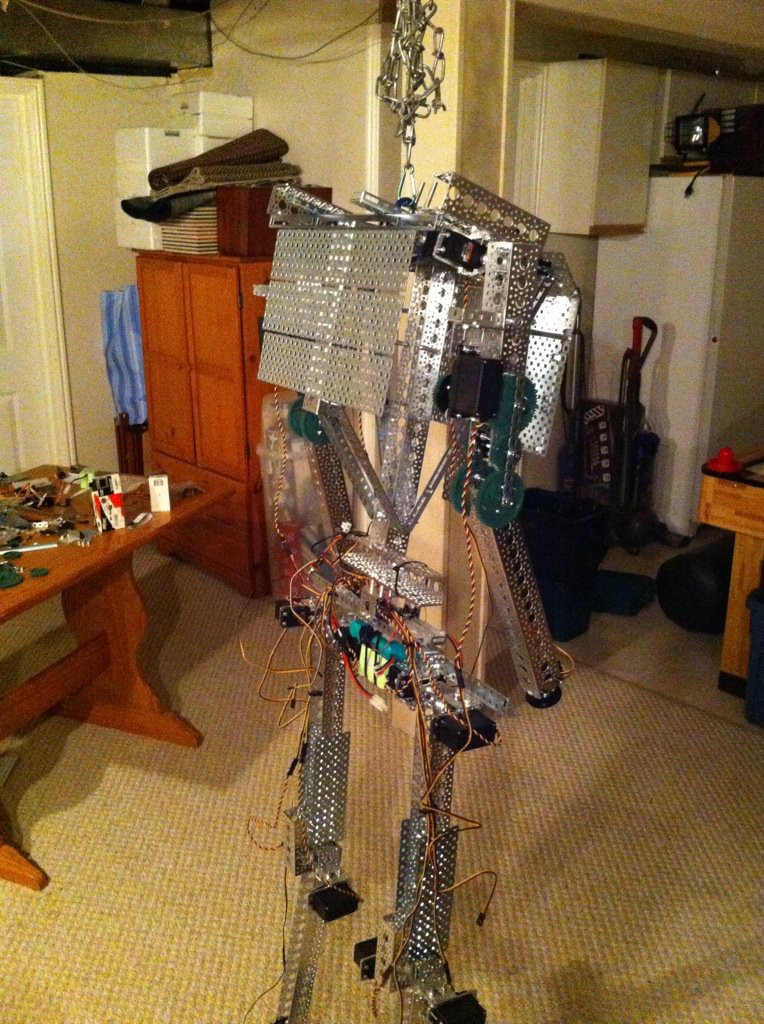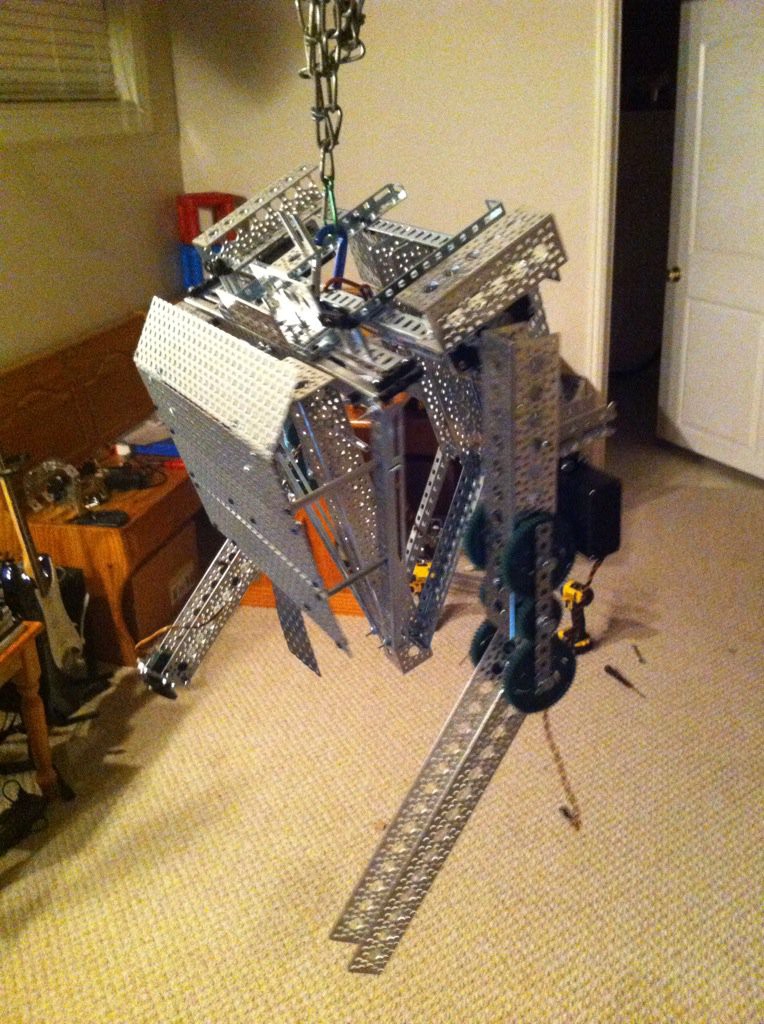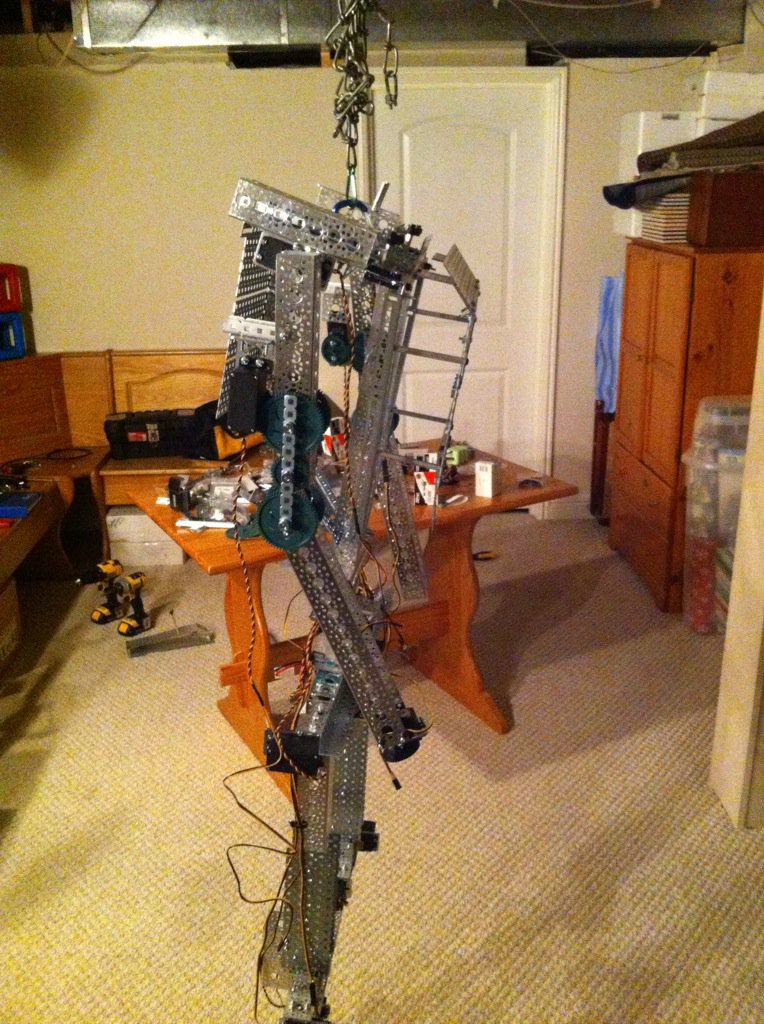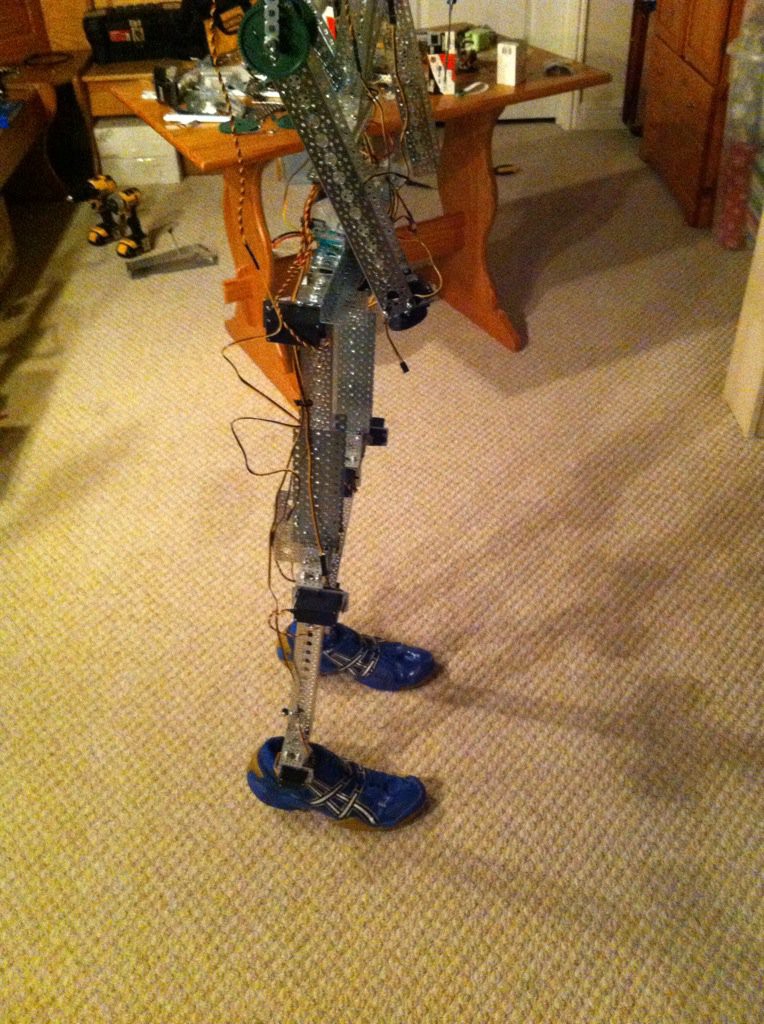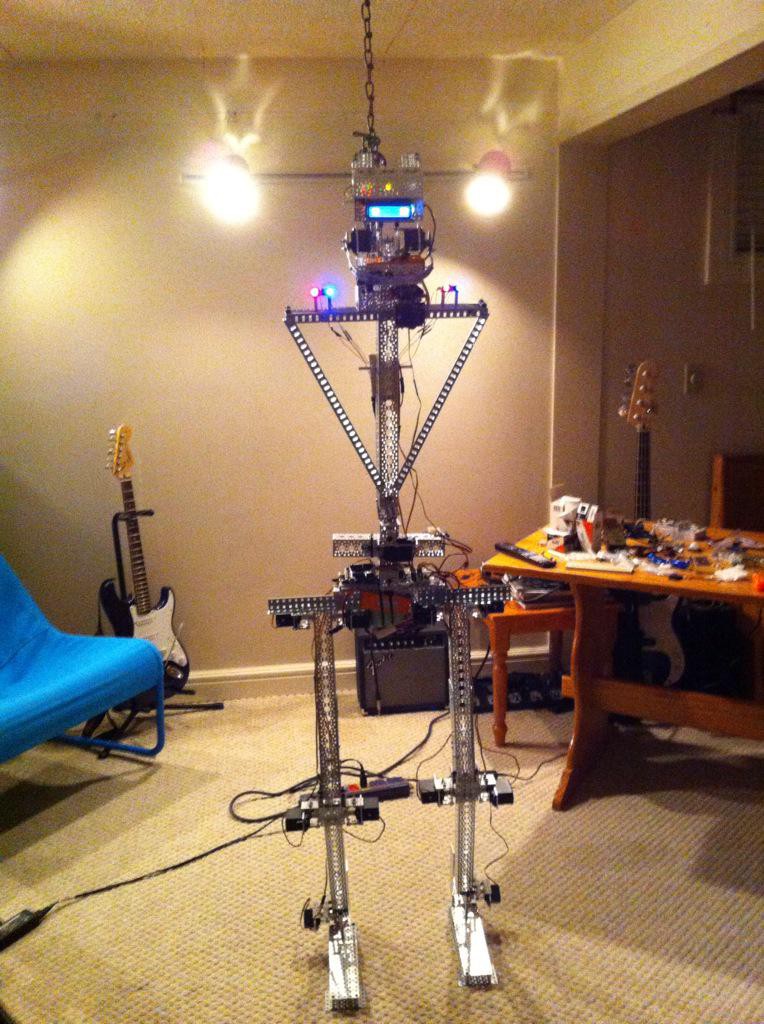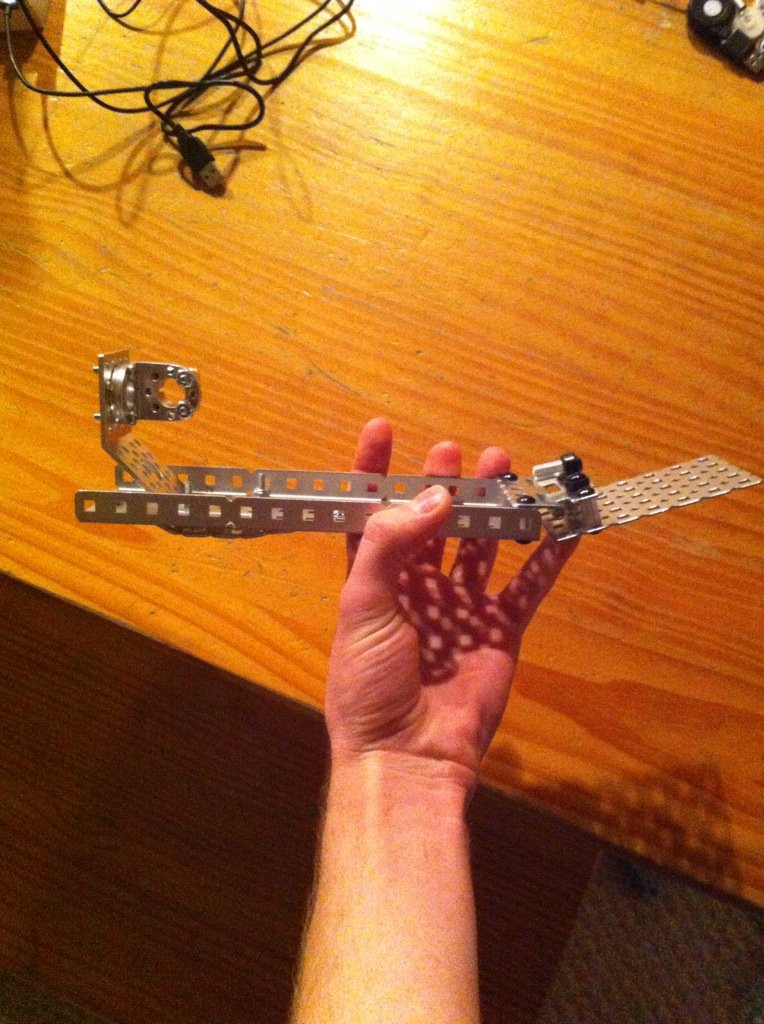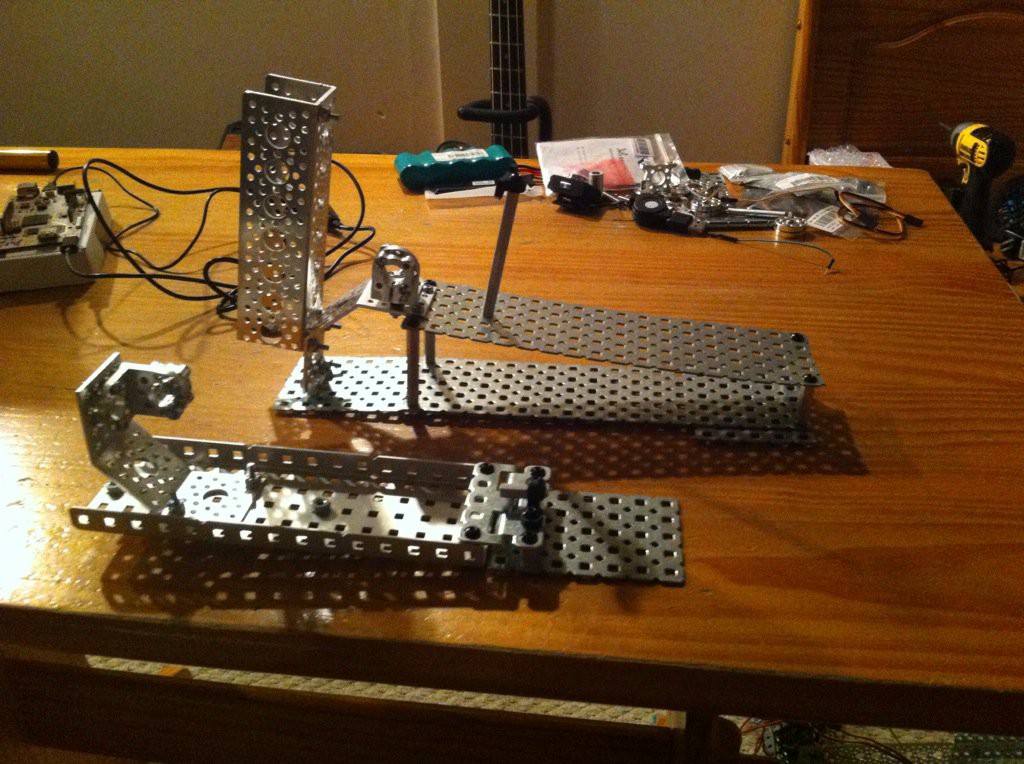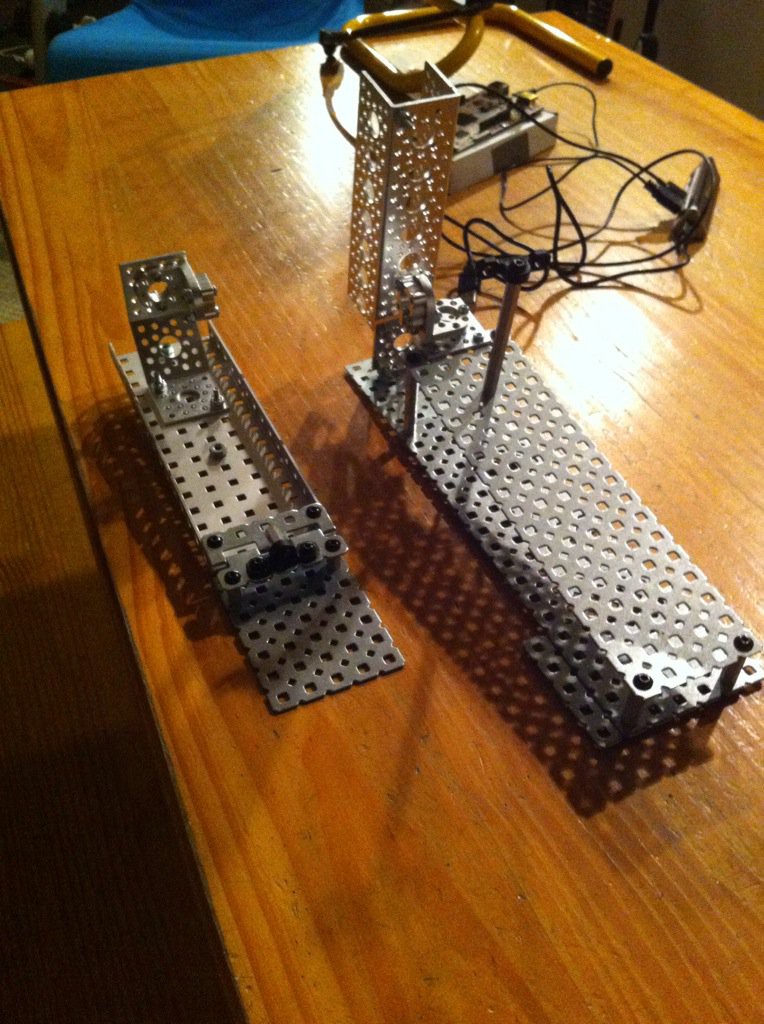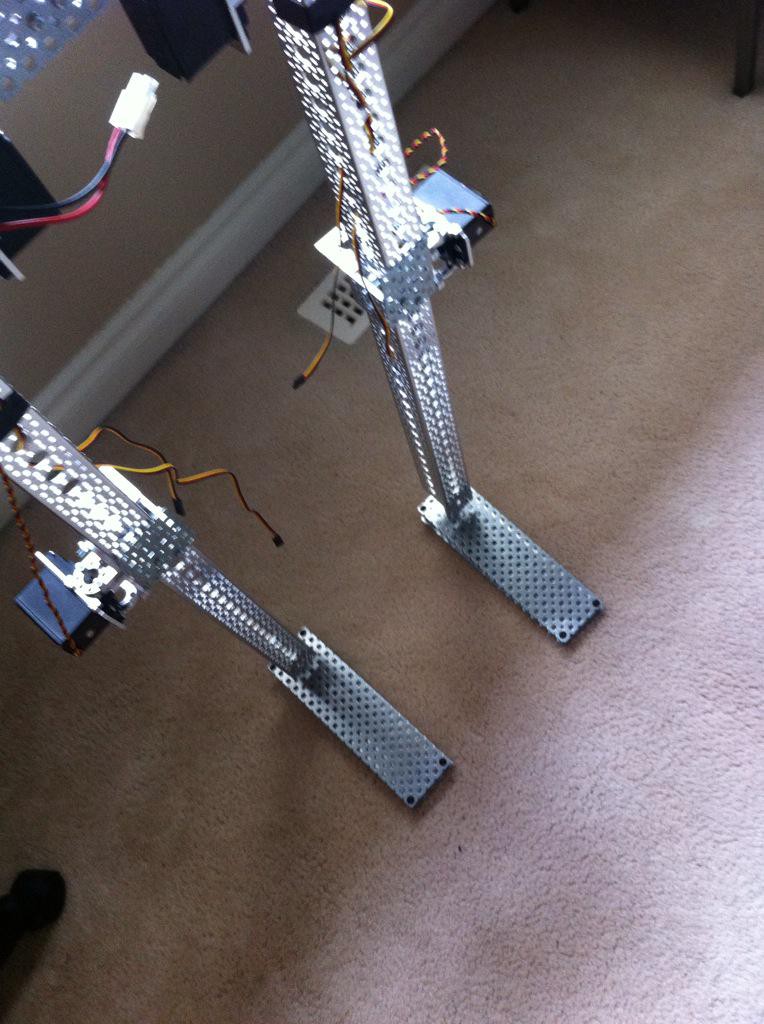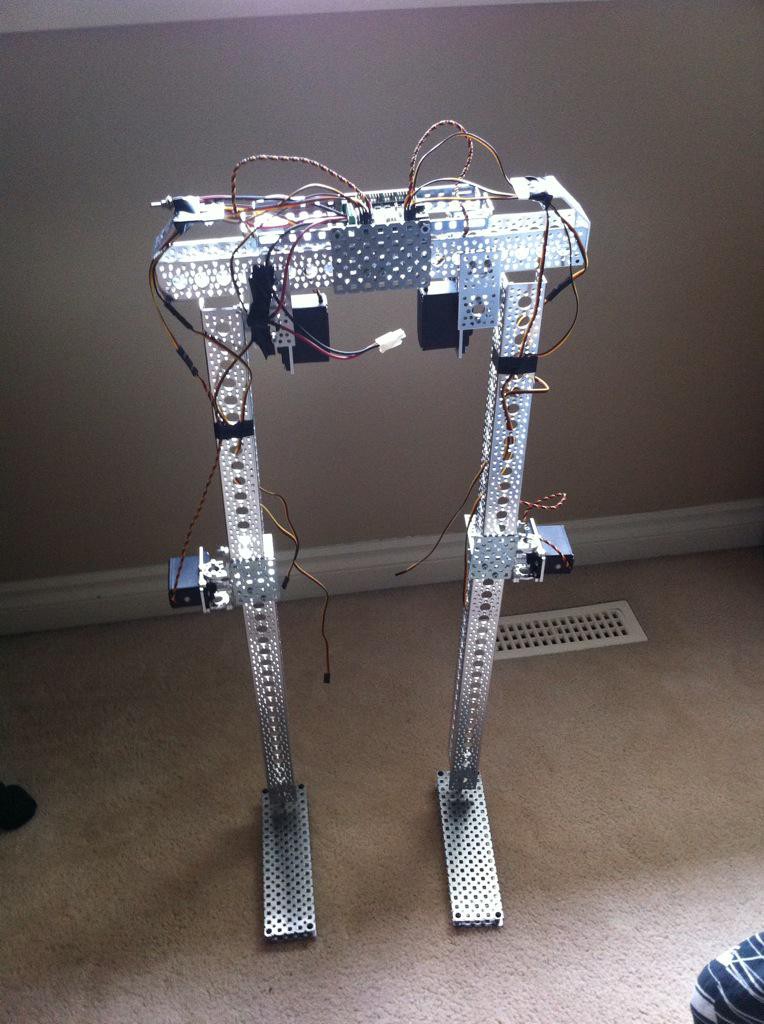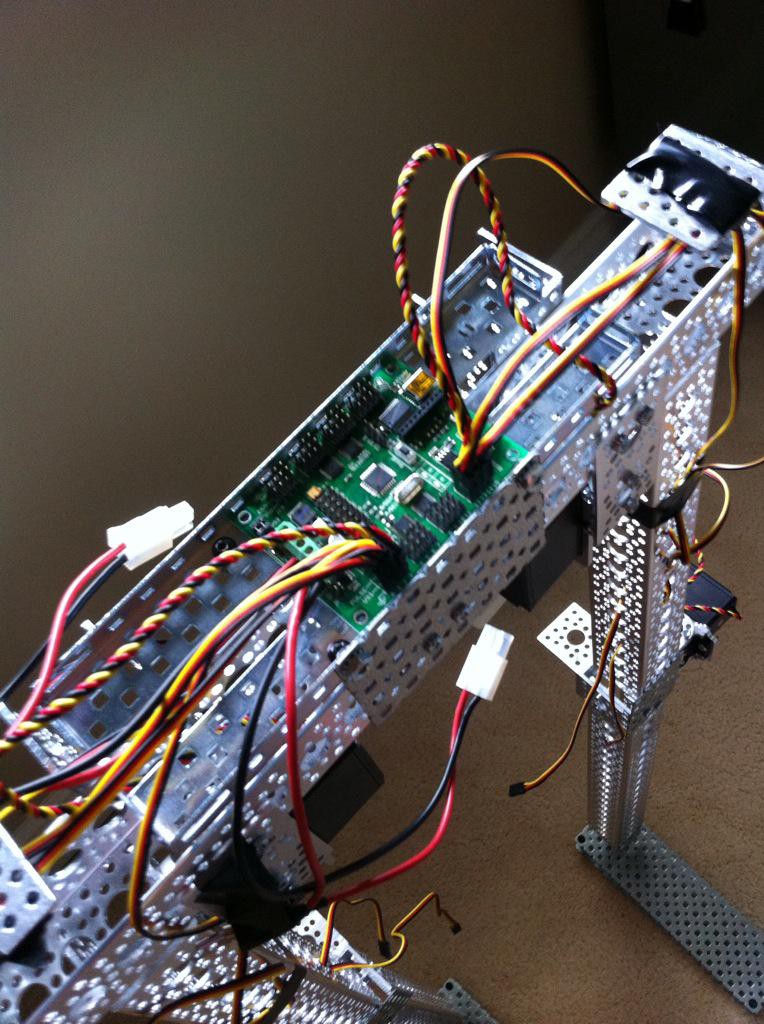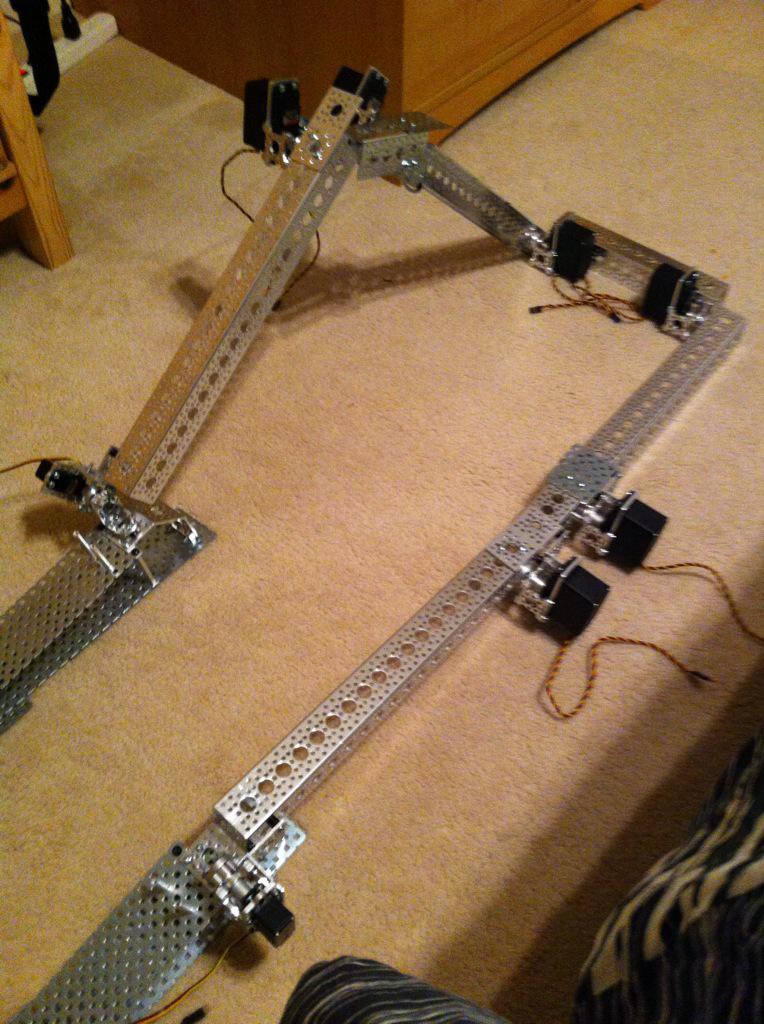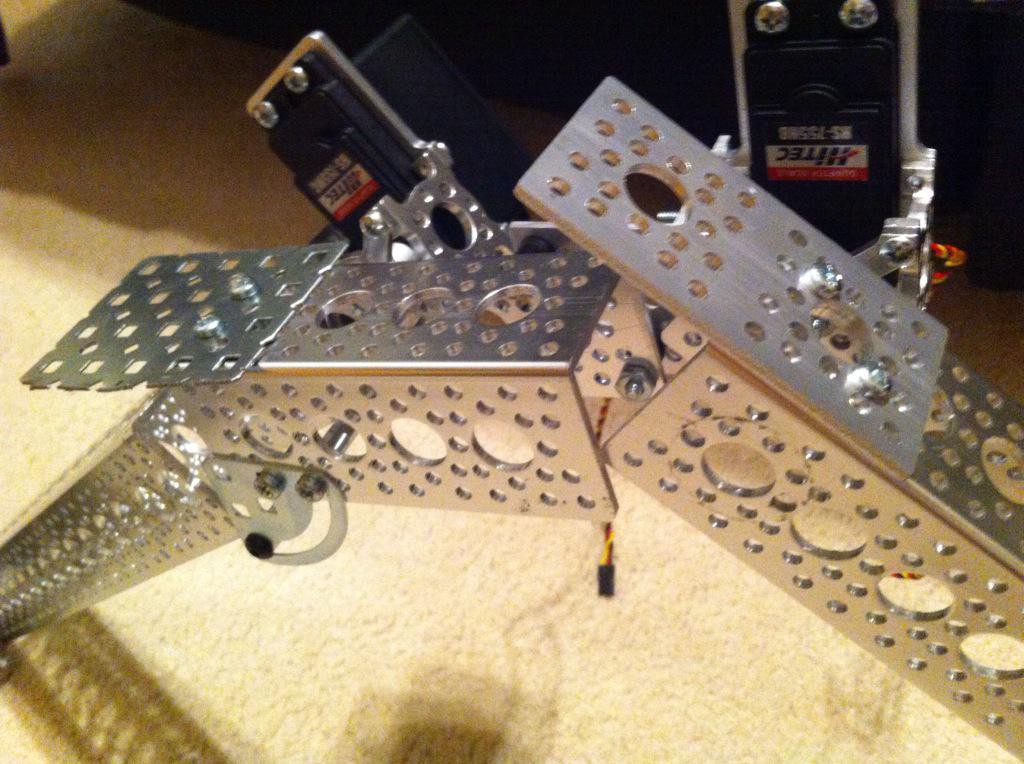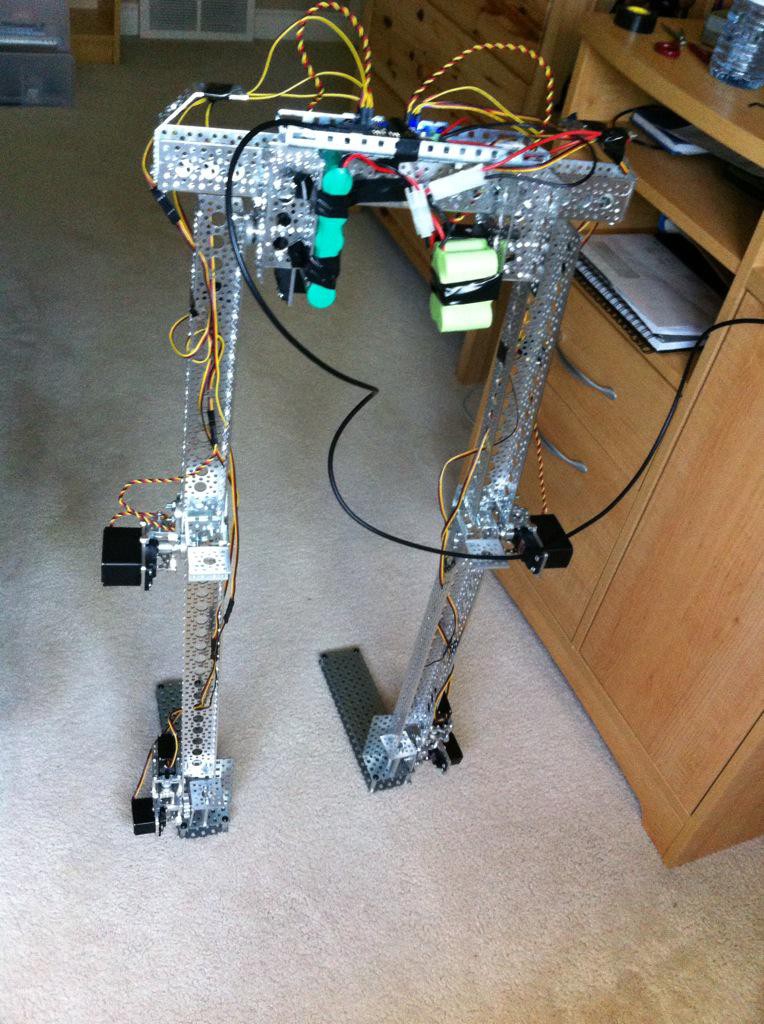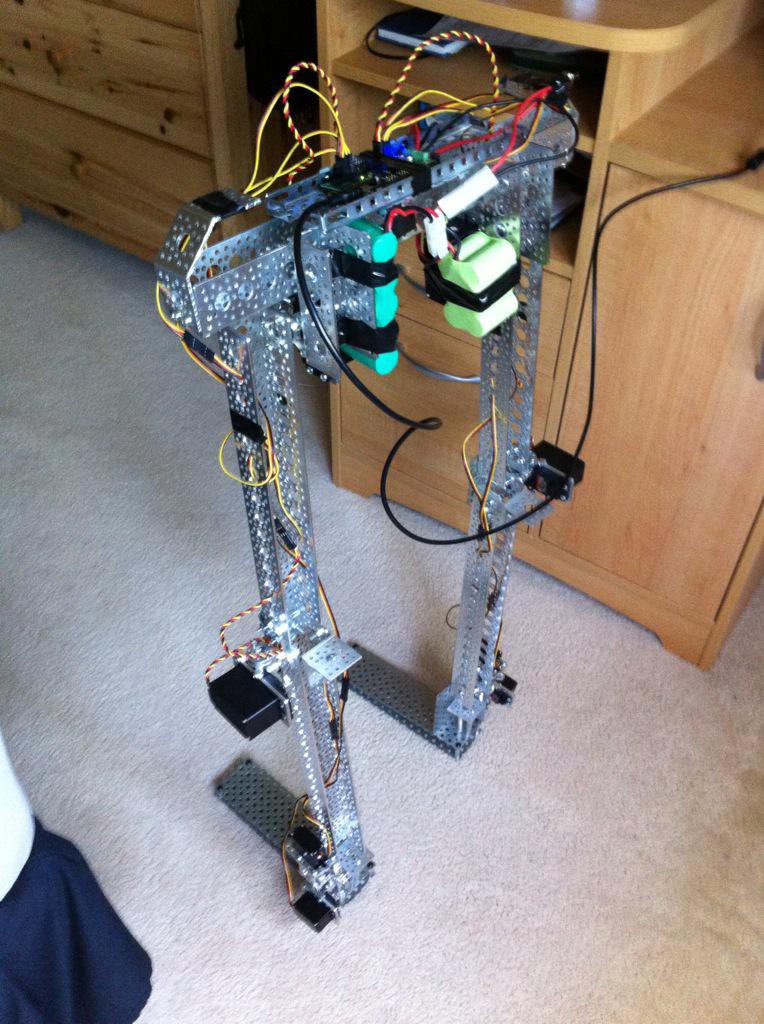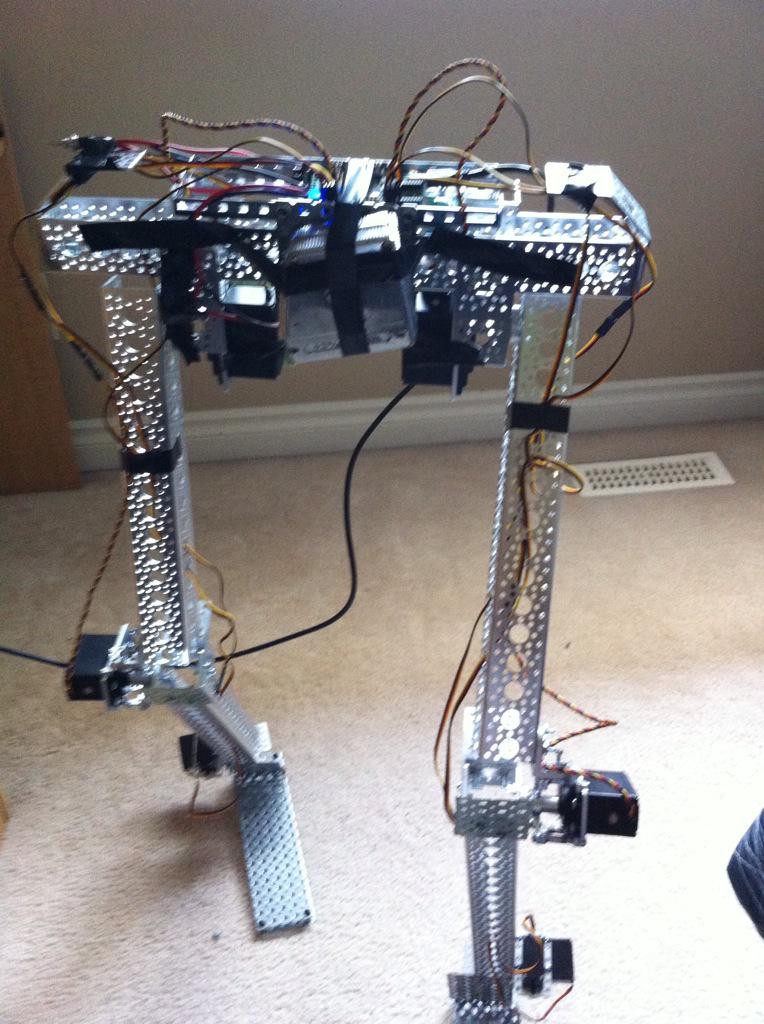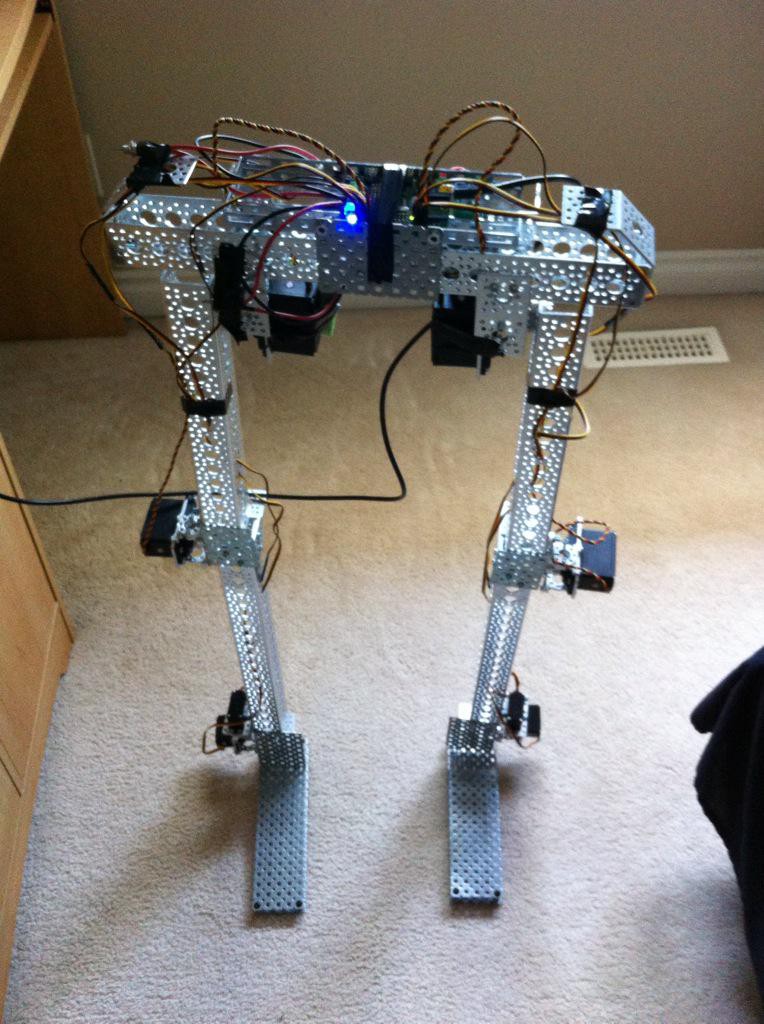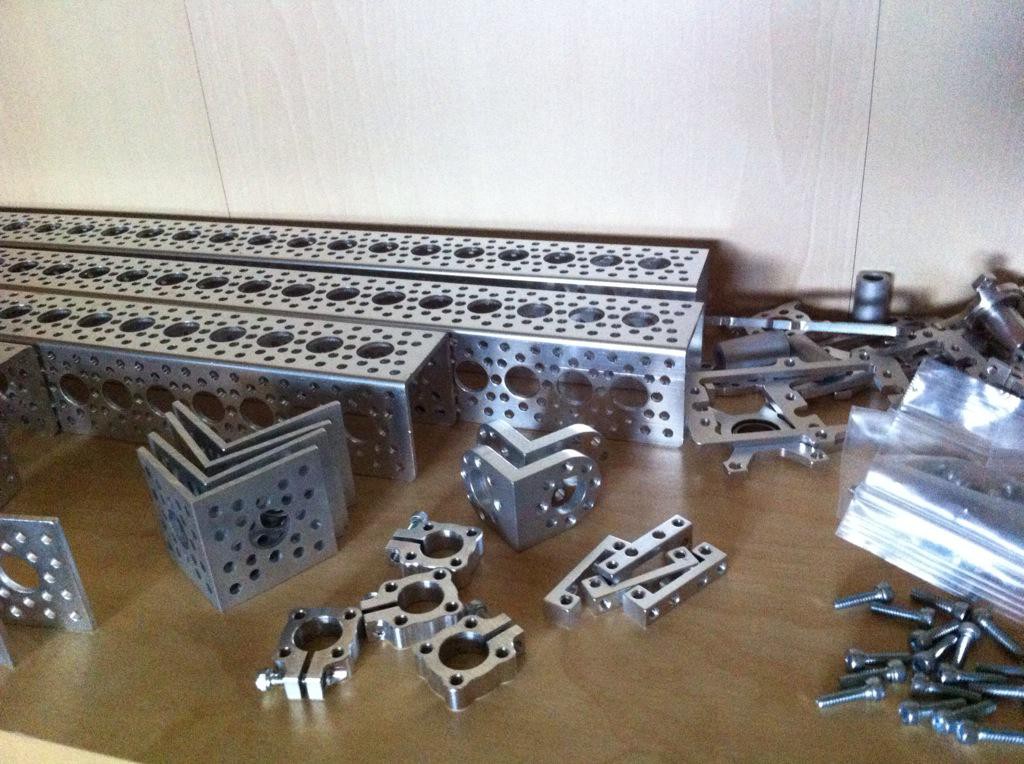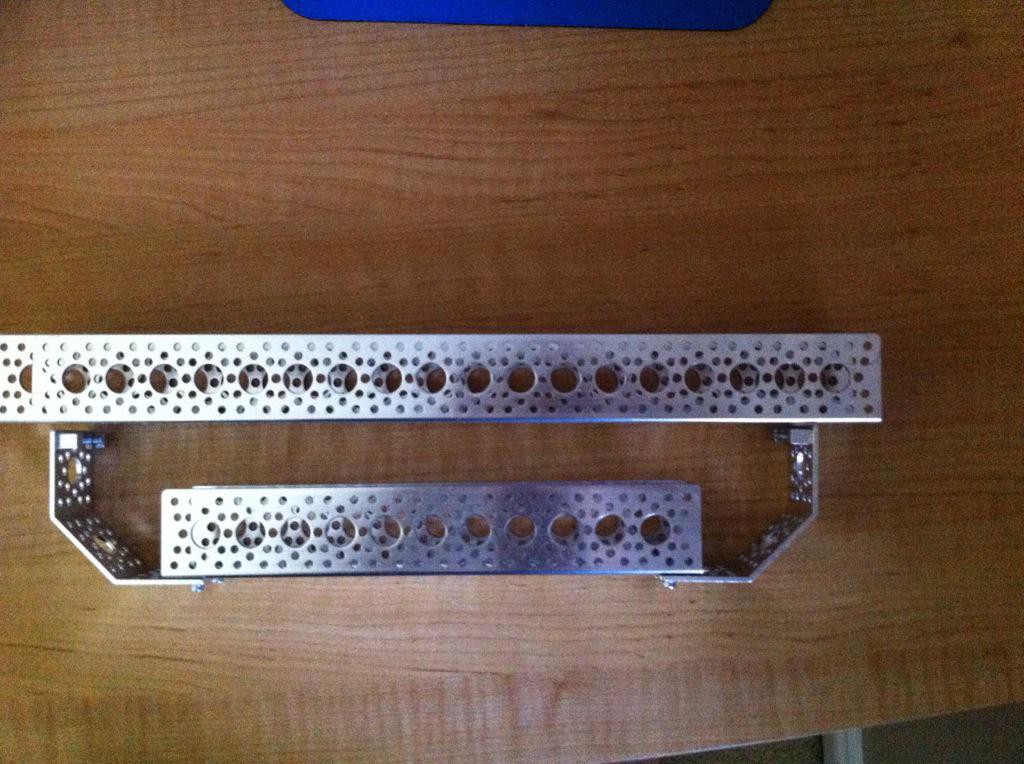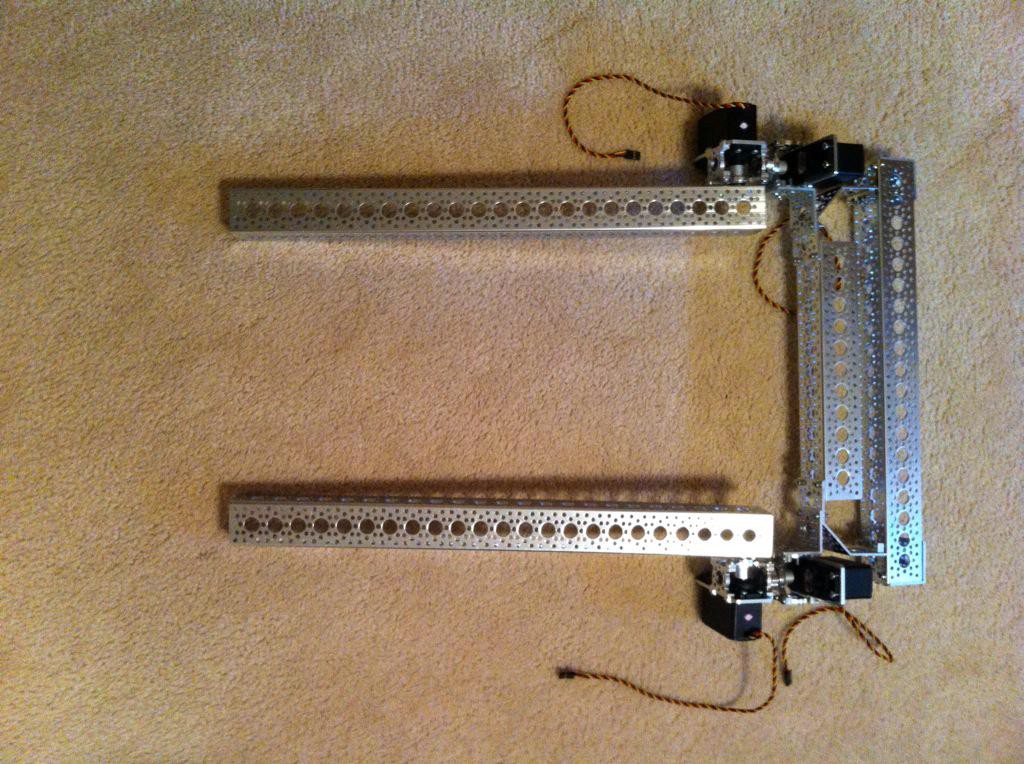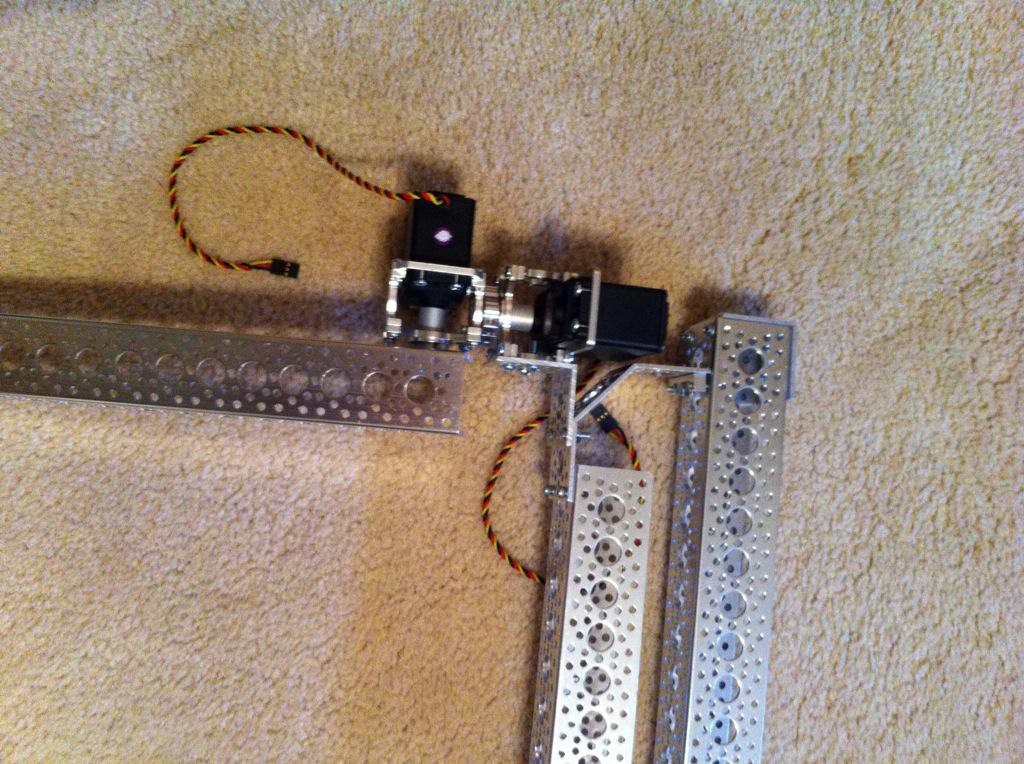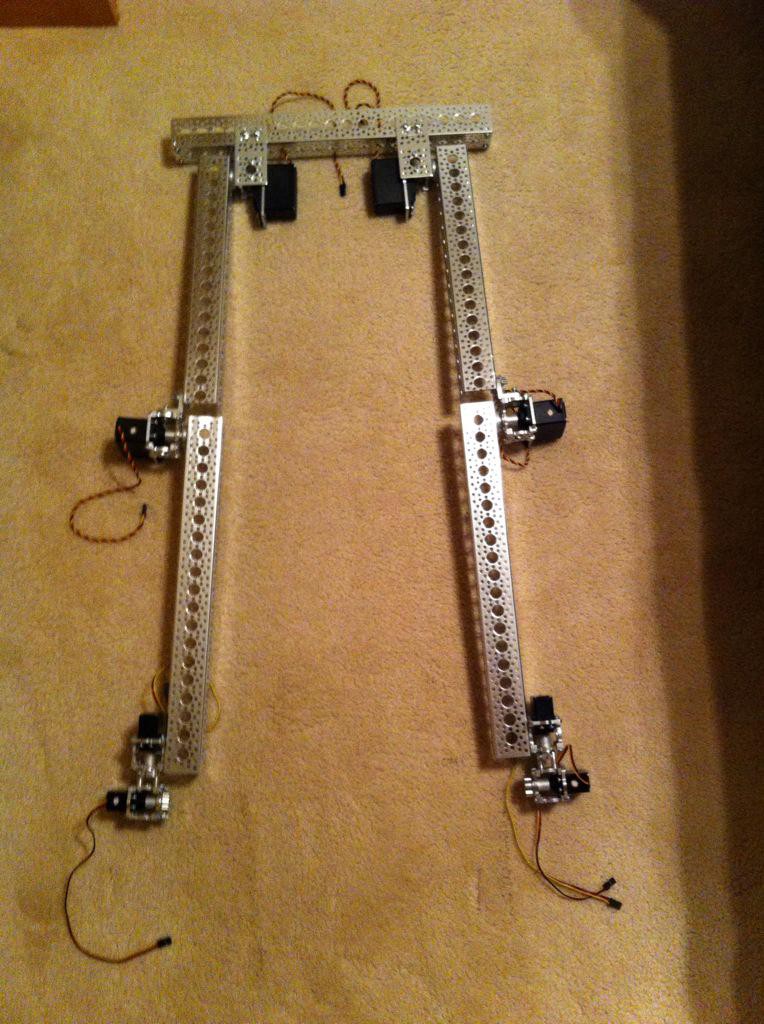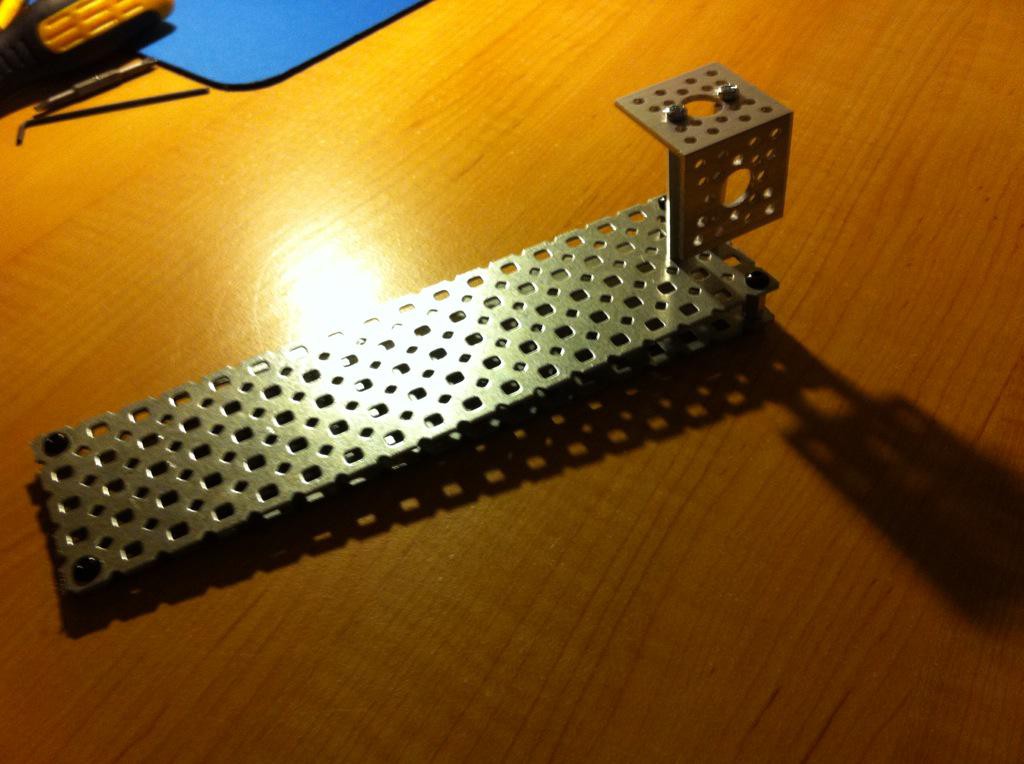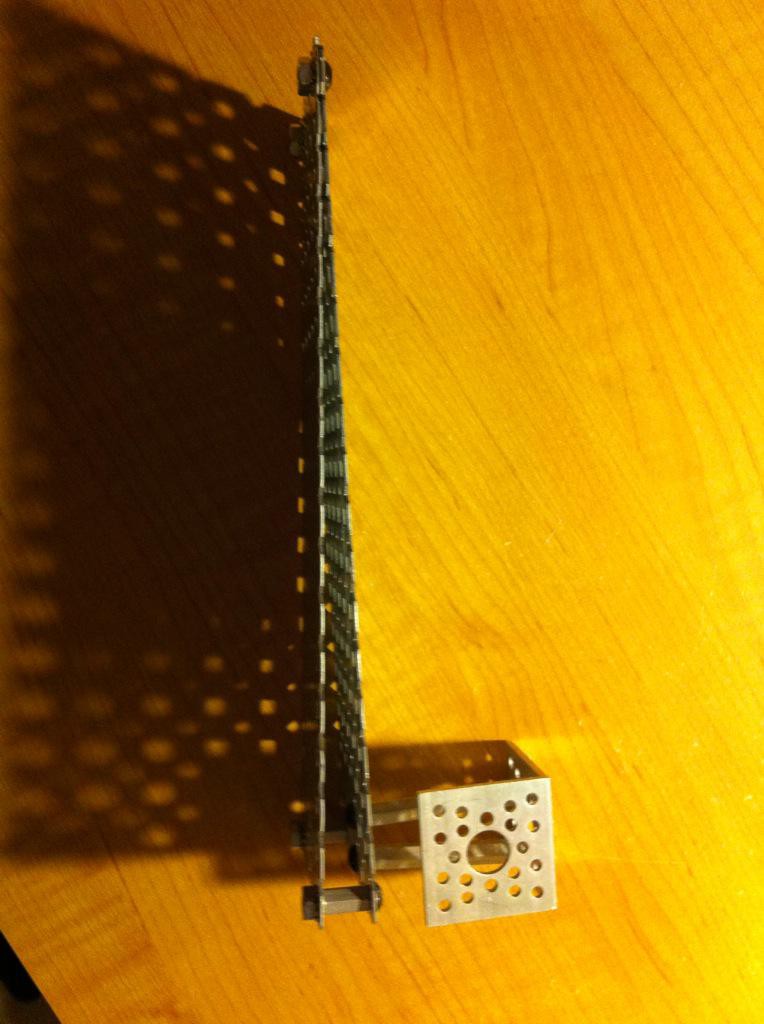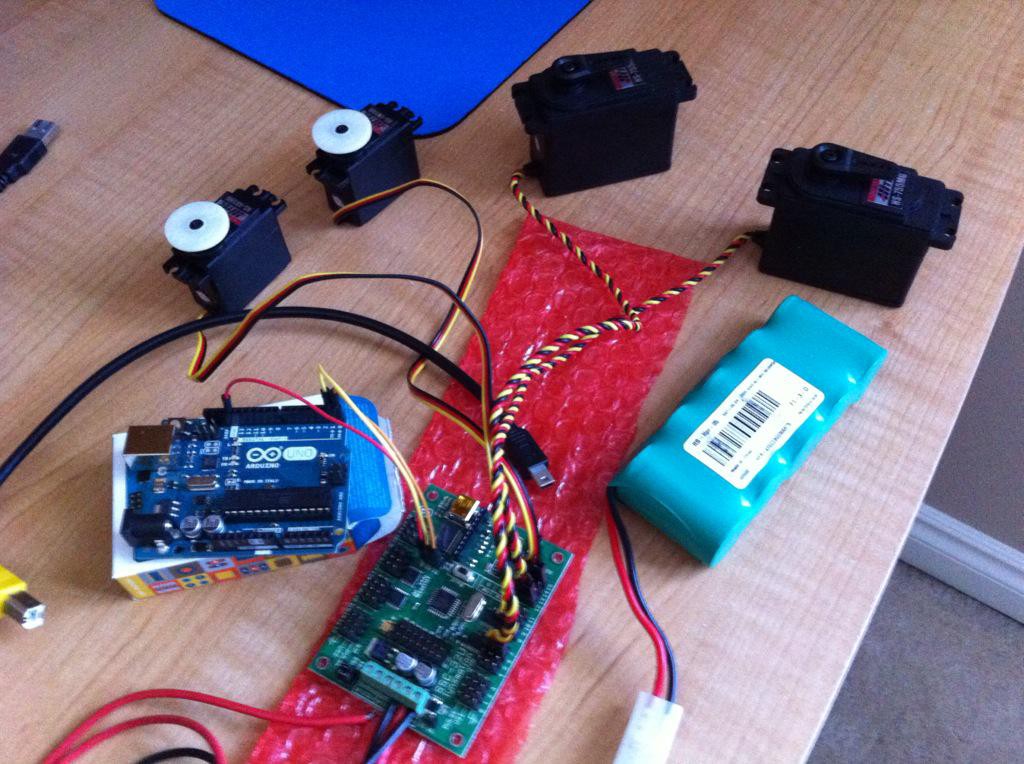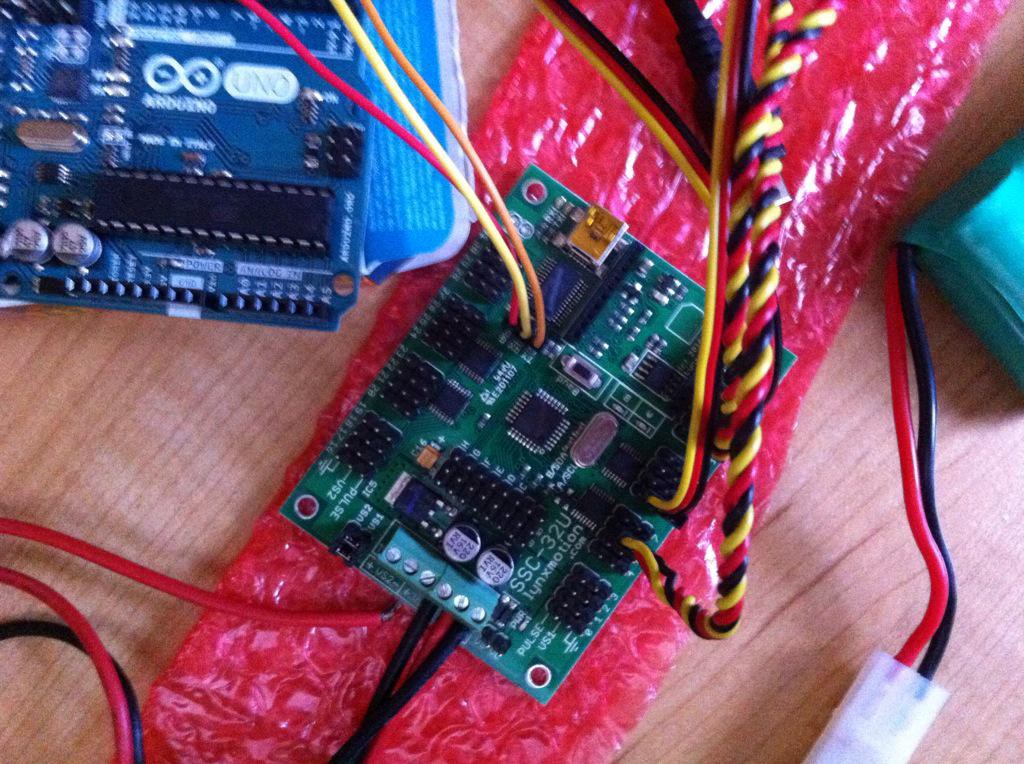-
Geared Servo Arm Drives
12/30/2020 at 03:44 • 0 commentsA set of arms now accompanies the torso!
Both arms are made of aluminum channel, and are also driven using hobby servos like the remainder of the robot. A simple linear gear drive using plastic gears is used to drive the elbows. A single large servo powers the shoulder, and wrist rotation servos are mounted in the forearms.
Finally, Freddy now sports a sweet pair of running shoes :)
-
Endoskeleton Design Improvements
11/25/2020 at 05:48 • 0 commentsBetween July and November 2015, a number of improvements were made to the endoskeleton!
First off, that weird "double knee" thing going on was removed, and a single-axis design was implemented using a servo motor on each side.
Next, we made the foot smaller, and switched to aluminum from steel. A hinged front toe was also added.
Next up, arms would be added to the torso.
-
The first steps!
11/25/2020 at 05:34 • 0 commentsWe had hit our first milestone: getting our robot to take it's first steps!
Of course, it wasn't entirely unassisted. The legs lacked some essential degrees of freedom required to correct itself if it were to lean too far to either side. It also lacked an IMU of some kind, so it wouldn't have any idea as to its orientation with the environment. Hence @Fennex628 being there to provide a helping hand.
At this point we had achieved very basic lateral motion moving in one direction, but it was pretty good for both our budget and timeframe at the time. Next, would be to add the additional DoF needed for advanced movement, and continue with the remainder of the build.
-
A quick machine vision demo before we get to walking...
11/21/2020 at 05:39 • 0 commentsWe thought we'd show a demo of the new PixyCam5 we had just received!
Not quite sure what we would have used it for other than simple object recognition, but we recorded a quick demo of it anyway! In layer years, we would end up developing our own machine vision systems in-house, but more on that in a future project log :)
-
Fixing up balance issues
11/21/2020 at 05:35 • 0 commentsWe made some changes to rebalance the existing lower body, and prep it for it's first walking test.
The pelvic region was slightly altered to not require a tape measure for balance anymore (haha). It was now capable of free-standing even without batteries mounted.
Additionally, the knees and ankles were re-done to reinforce them, as well as provide the ankles with active control we deemed necessary for walking to be possible.
Soon enough, we would be ready to make Freddy walk for the first time!
-
Freddy stands!
11/21/2020 at 05:26 • 0 commentsWe did it! Sorta...
Well we got Freddy to stand on his own at this point! The mounting of the electronics and batteries was a little crude, and we did require a tape measure to act as a counterbalance. Still, progress was progress!
-
Freddy begins...
11/21/2020 at 05:22 • 0 commentsConstruction of Freddy Fazbear has begun!
The fun work of building Freddy from FNAF had begun for Project 87, with the arrival of Actobotics aluminum components! We decided to go for a premade modular system when it came to designing the endoskeleton, to make the overall process easier. The materials weren't terribly expensive, albeit nowhere as cheap as modern 3D-printing (which we now fully use).
As for what we would begin with first, we started with the lower body. That mean everything from the hips and pelvis down to the feet. Starting with the pelvis, we added on servos for driving the thighs and rotating the legs.
Next we added knee and ankle joints:
Finally, we added some very simple (and flat) feet. These were made from a combination of Actobotics and Vex components.
Next up would be the task of wiring the servo motors and mounting the electronics and power supplies.
-
Getting things in motion!
11/21/2020 at 05:10 • 0 commentsOur first ventures into robotics started with servos!
In May 2015, we started off with some very simple motion experiments, getting hobby servos to work with a number of different software tools. Using embedded servo controllers (the LynxmotionSSC-32U and BotBoarduino), we familiarized ourselves with the basic operation of PWM motors and what little controls we could integrate into our designs.
At the time we were not fully aware of the drawbacks associated with direct driving a humanoid robot using hobby servos (especially for the scale we were aiming for). Nonetheless it got us headed down the right path!
And of course, our first working test of multiple servos working together:
-
The Beginning
10/15/2020 at 00:57 • 0 commentsThe year is 2015...
and we are intrigued by the concept of a walking animatronic as explored in the 2014 video game, Five Nights at Freddy's. So we set off to create one of our own with the goal of further exploring the concept, and proving that it were possible. At this point in time, we had little formal experience in the field of robotics - let alone developing full scale humanoids! However, this only served to further encourage us to carry on with the project with the mindset of "go big or go home".
Where to start though? Surely there were some online tutorials for small bipeds and Arduino projects at the time, and there was also the InMoov project - though nothing too concrete to go off of regarding the construction of legs. And on a shoestring budget? No way. Self-learning would have to be the method of choice, and trial and error would be the best instructor.
With all of that in mind, we created Project 87 in May 2015, named after an in-game reference from FNAF. We had no idea at the time what kind of attention the project would see over the years, let alone it turning into an actual startup company. The best part is that five years later, it is still going strong! Over the next series of logs, you can see our journey in self-taught robotics over the years, and the evolution of our designs.
Anthro (Anthropomorphic Robot) - Legs
Agile and adaptable humanoid robot legs. Fully-customizable, compliant, and open-source.
 Anthrobotics
Anthrobotics